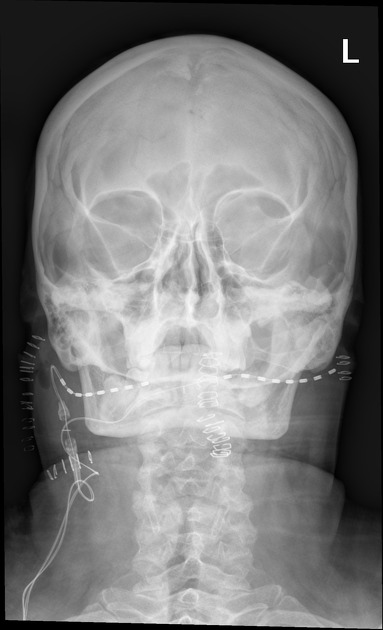Occipital neuralgia, also known as Arnold's neuralgia, is a neuralgic pain, similar to the better-known trigeminal neuralgia, but affecting the occipital nerves.
On this page:
Terminology
The term C2 neuralgia is often used synonymously with occipital neuralgia, and reasonably so as the greater occipital nerve is the most common cause of occipital neuralgia and is the medial branch of the dorsal ramus of C2 6. This is not truly a synonym, however, as occipital neuralgia can also be caused by C3 fibers traveling in the lesser occipital nerve or third occipital nerve (see below). As such, unless the cause of pain has been definitively localized to C2, the term occipital neuralgia is preferred.
Occipital neuralgia is also distinct from occipital migraines that lack the short and paroxysmal episode of pain characteristic of neuralgias but instead have the longer-lasting multiple phases of migraines.
Epidemiology
Occipital neuralgia is uncommon and perhaps somewhat more common in females 4.
Clinical presentation
Occipital neuralgia is characterized by sudden severe pain radiating from the occipital triangle, up into the posterior scalp 1. It is usually unilateral (85%) 1.
Diagnosis can be confirmed by local anesthetic greater occipital nerve blockade; this can also be therapeutic 1. Unfortunately, the main differential diagnosis, occipital migraine, can have similar symptoms and can be ameliorated with occipital local anesthetic injections 1.
Fronto-orbital pain may also be present due to connections between cervical nerves and the trigeminal nerve in the trigeminal spinal nuclei 7.
Pathology
Pain can originate from the greater occipital nerve, lesser occipital nerve or third occipital nerve 1. The underlying cause, however, is uncertain and possibly varied. Possible causes that have been suggested include 1:
trauma e.g. whiplash
-
structural compression
by fascia or muscle bands
by vascular loops
cord lesions
In most cases, however, no clear cause is identified and the condition is then thought to be idiopathic 1.
Radiographic features
Radiographic imaging is of limited utility in the diagnosis of occipital neuralgia but is primarily concerned with excluding structural pathology of the cord, the spine, the occipital nerves or adjacent structures. As such, MRI is best suited to this task 1,4.
Ultrasound
The greater occipital nerves can be identified on ultrasound and in cases of occipital neuralgia the affected nerve may be seen to be enlarged compared to the asymptomatic side 2.
Treatment and prognosis
Treatment can vary from oral therapy (e.g. tricyclic antidepressants or antiseizure medications), injections (with local anesthetic with or without corticosteroids or Botulinum toxin), radiofrequency ablation or insertion of occipital nerve stimulators 1,4.
Greater occipital nerve injection can be carried out under ultrasound or CT guidance 3.
Differential diagnosis
The differential diagnosis of occipital neuralgia is with other primary headache disorders, particularly those that can have a posterior distribution. Considerations should include 1,4:
temporal arteritis (involving occipital artery)





 Unable to process the form. Check for errors and try again.
Unable to process the form. Check for errors and try again.